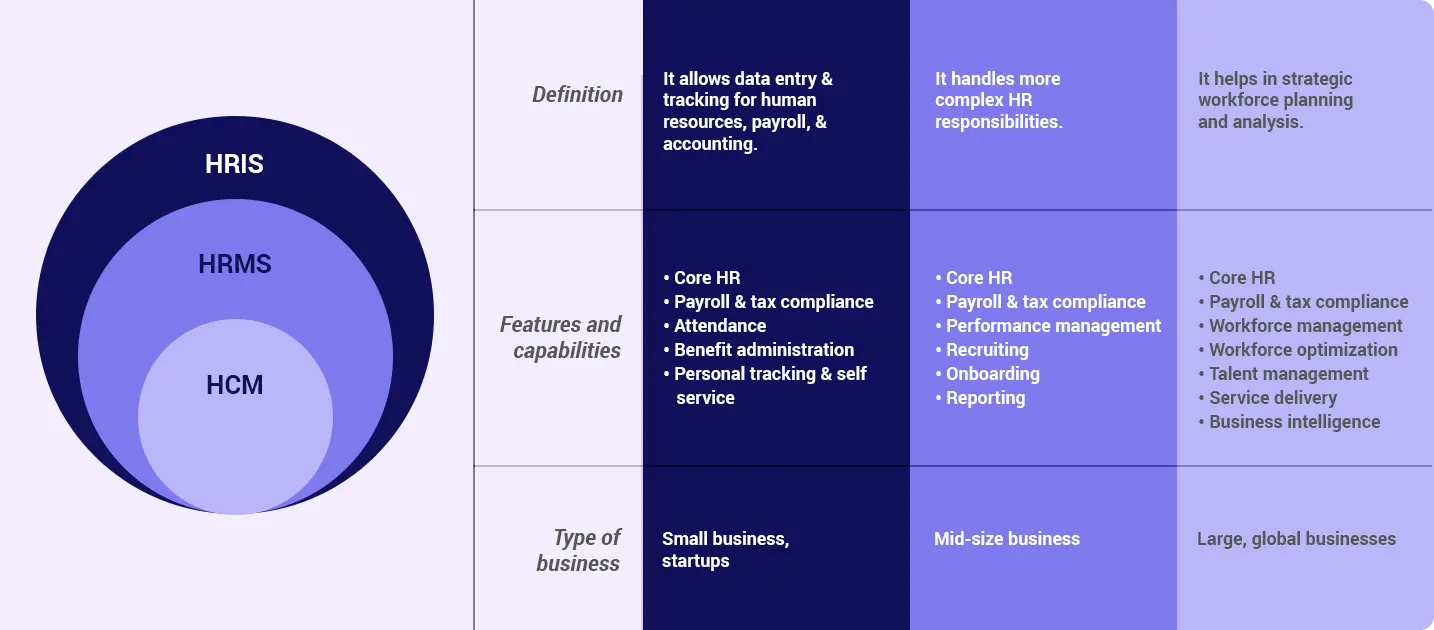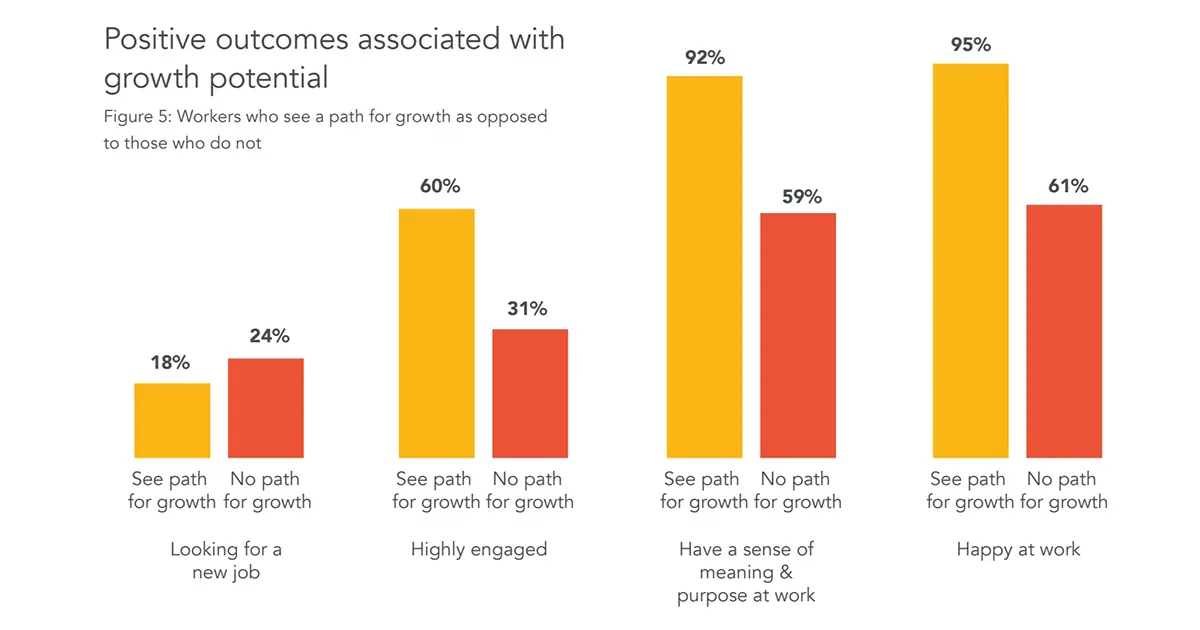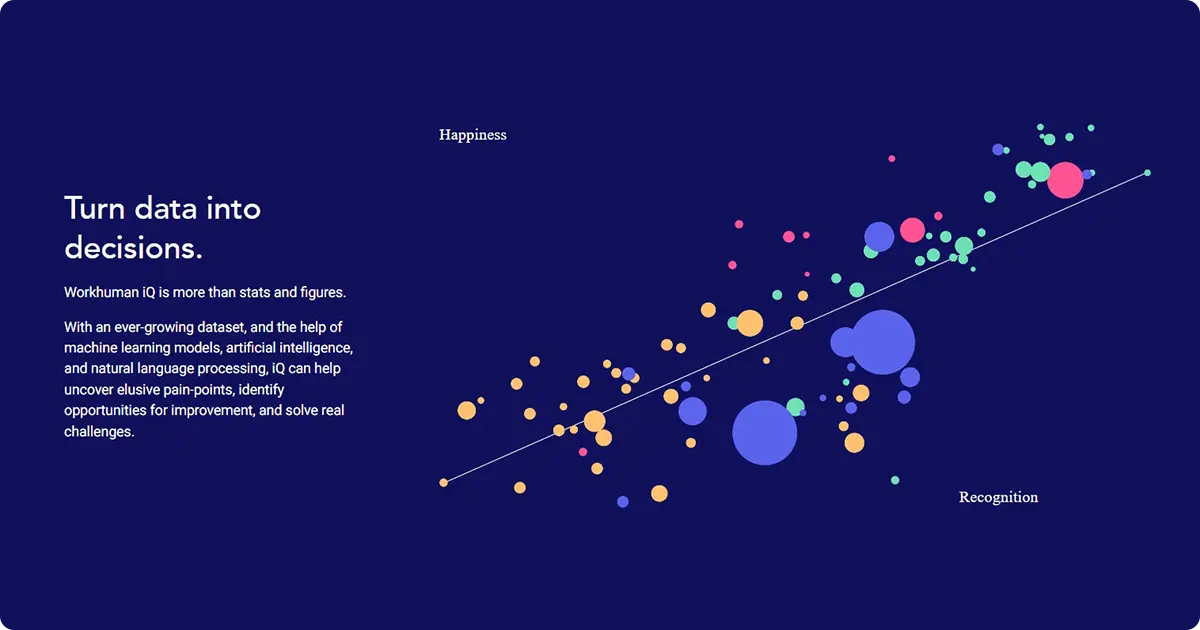What Is Human Capital Management (HCM)? Understanding Its Importance in Modern Business
Understanding the intricacies of human capital management (HCM) is paramount for modern organizations in a rapidly evolving business landscape. HCM is more than just a buzzword; it encompasses strategies and practices to maximize employee value to drive organizational success.
In this blog, we'll delve into the fundamentals of HCM, explore its key components like talent acquisition and performance management, and examine its historical evolution.
By leveraging advanced tools and continuous adaptation, your organization can boost productivity and sustain growth. Join us as we explore how effective HCM can transform your workplace.
Defining Human Capital Management
Human Capital Management (HCM) encompasses a wide range of strategies and practices aimed at recruiting, managing, developing, and enhancing the potential of an organization's employees and aligning it with the company's strategic goals.
Key components of HCM include:
- Workforce planning: Ensuring the right talent is in place by aligning employee roles with company objectives and establishing clear goals to bridge the gap between the current and desired state of the organization.
- Talent acquisition: Implementing effective recruitment strategies and employer branding to attract top talent.
- Employee training and development: Fostering a culture of continuous learning and providing development programs to enhance employee skills and career growth.
- Performance management: Utilizing tools and metrics to assess and enhance employee performance, focusing on continuous performance feedback rather than traditional annual reviews.
- HRIS integration: Streamlining data management and processes like payroll, benefits administration, and employee records through a Human Resources Information System (HRIS) to facilitate informed decision-making.
- Employee retention: Developing strategies to improve engagement and retention, focusingwith a focus on recognition and rewards to maintain a motivated workforce.
Are you ready to transform your workplace with a human-centric approach?
Discover strategies and tactics to strengthen connections and build a culture of recognition in your organization. 💪
Embrace celebrations that honor the whole human and recognition that flows up, down, and across your company. 🙌 Set the path for a brighter future of work with a human-centric approach.
Click the link to download the report now! 📥 #HumanCentricApproach #FutureOfWork #TransformWorkplaces #DownloadNow
Evolution of HCM from traditional HR practices
Human Capital Management (HCM) has evolved significantly from traditional Human Resources (HR) practices. Initially, HR focused on administrative tasks like payroll, compliance, and personnel management.
Over time, the scope expanded to include strategic elements such as talent management, employee engagement, and organizational development.
The shift from administrative functions to strategic management marked the birth of HCM, highlighting the importance of nurturing and optimizing human capital as a critical asset.
Impact of technology on HCM
Technology has revolutionized HCM, transforming how organizations manage their workforce. Advanced human resource technology, such as Human Capital Management software and systems, has automated routine tasks, enabling HR professionals to focus on strategic initiatives
Data analytics and artificial intelligence (AI) provide insights into employee performance, engagement, and retention, allowing for data-driven decision-making.
Cloud-based solutions enhance accessibility and scalability, facilitating real-time
collaboration and process efficiency. As a result, Human Capital Management technology has streamlined processes and enhanced their effectiveness and impact on organizational success.
HCM vs. HRM vs HRIS: Understanding the differences
The terms HCM (Human Capital Management), HRIS (Human Resource Information System), and HRMS (Human Resource Management System) are often used interchangeably, but they have distinct differences in scope and functionality.
Human Capital Management (HCM)
HCM is the most comprehensive and strategic of the three systems. HCM software encompasses all HRIS and HRMS functionalities and extends beyond them to include broader HR strategies and processes to maximize the value of human capital. HCM focuses on the entire employee lifecycle and includes advanced features such as:
- Onboarding
- Performance management
- Position mapping
- Benchmarking salary and benefits
- Global compliance
- HR analytics
- Talent development pipelines
- Retirement and pensions management
HCM systems are designed to support strategic decision-making and align HR processes with overall business goals.
Human Resource Information System (HRIS)
HRIS is primarily a data management system that stores and manages employee information. It is the most basic of the three systems and includes functionalities such as:
- Payroll
- Tax compliance
- Benefits administration
- Time and attendance tracking
- Personnel tracking
- Employee self-service options
HRIS is ideal for smaller companies with straightforward HR needs, providing a centralized repository for employee data and basic HR functions.
Human Resource Management System (HRMS)
Human resource management (HRMS) builds on the capabilities of HRIS by adding more complex and extended HR functionalities. It includes all HRIS features and adds tools for:
- Performance management
- Succession planning
- Recruiting
- Onboarding
- Absence management
- Expanded analytics capabilities
- Applicant tracking system
- Extra security measures
HRMS suits organizations looking to streamline and automate more complex HR processes. It offers a more detailed and integrated approach to managing the employee lifecycle.
Summary of Differences
- Scope: HCM > HRMS > HRIS
- Strategic Focus: HCM includes strategic HR processes and tools, while HRIS and HRMS focus more on operational and administrative tasks.
- Functionalities: HCM encompasses all HRIS and HRMS functionalities and adds advanced features for strategic HR management. HRMS includes more complex HR functions than HRIS but is less comprehensive than HCM.
- Ideal Use: HRIS is best for smaller companies with basic HR needs, HRMS is suitable for growing organizations needing more complex HR management, and HCM is ideal for organizations focusing on strategic HR initiatives and comprehensive employee lifecycle management.

Understanding these differences can help organizations choose the right system based on their specific HR needs and strategic goals.
HCM in talent management
Streamlining hiring and onboarding
Effective HCM practices streamline the hiring process by automating talent acquisition and recruiting efforts. This includes using advanced tools for sourcing candidates, conducting talent reviews, and managing the onboarding process.
Automation in hiring ensures quicker and more accurate candidate assessments. It emphasizes finding the best fit for the company culture and job requirements. The onboarding process has also been improved with predefined steps that make new hires feel welcome and ready to contribute from day one.
Advancing career development and retention
Career development is a pivotal part of retaining top talent in your organization. Your Human Capital Management system should provide employees with clear paths for growth, supported by continuous learning opportunities and performance assessments.
Offering a personalized employee development plan maintains employee motivation and engagement. Research from our “The State of Humanity at Work” report found that 95% of employees who see a path for growth in their organization are happy at work, compared to only 61% who see no path for growth.
With this survey data, gain a deeper understanding of how to better cater to core human needs, such as safety, fair pay, work-life harmony, growth, inclusion and belonging, and recognition.

Retention rates improve when employees see a future within the company. By regularly conducting talent reviews and providing constructive feedback, you can address career aspirations and potential challenges proactively. This approach fulfills both individual and organizational goals.
Cultivating leadership and succession planning
Leadership cultivation and succession planning are integral to sustaining organizational growth. HCM systems help identify and nurture potential leaders through systematic succession management processes. This includes talent reviews to pinpoint high-potential individuals and developing tailored leadership programs.
Succession planning ensures you are not caught off guard by unforeseen departures. By preparing future leaders, you maintain stability and continuity. Implementing robust HCM practices guarantees that your leadership pipeline is always filled with capable and ready successors, minimizing disruption and ensuring smooth transitions.
Optimizing workforce management
Enhancing employee experience and engagement, leveraging workforce planning and analytics, and ensuring proper attendance and compliance are crucial to effectively managing your workforce.
Enhancing employee experience and engagement
A positive employee experience directly influences productivity. Fostering an engaging workplace can be achieved through regular feedback, recognition, and transparent communication.
The key is consistency. Our research found that employees prefer more frequent and consistent feedback. Employees who check in with their manager weekly as opposed to never are:
- More than 2x as likely to trust their manager
- Nearly 2x as likely to respect their manager
- Nearly 2x as likely to believe they can grow in the organization
Implement tools like employee feedback surveys to understand needs and address concerns.
Engagement initiatives can include:
- Recognition programs
- Career development opportunities
- Flexible work arrangements
These efforts help create a supportive environment where employees feel valued and motivated to contribute their best. By focusing on engagement, you can lower turnover rates and boost overall morale.
Strategies for workforce planning and analytics
Workforce planning and analytics are pivotal in predicting future hiring needs and understanding workforce dynamics. Implementing workforce planning models involves analyzing current talent and forecasting future needs.
Use analytics tools to:
- Identify skills gaps
- Predict attrition rates
- Optimize workforce deployment
Strategic planning aligns workforce capabilities with organizational goals. You can make informed recruitment, training, and development decisions by integrating data-driven insights.
Managing attendance and compliance
Effective time and attendance management ensures that employees adhere to work schedules and that your organization complies with labor laws. Utilize automated time-tracking systems to monitor attendance and manage leave requests.
Key aspects include:
- Accurate record-keeping
- Monitoring absenteeism trends
- Ensuring timely payroll processing
Regulatory and HR compliance are critical. Failing to comply with labor regulations can result in penalties and legal issues. Maintain up-to-date knowledge of relevant laws to avoid compliance risks. You foster a structured and fair workplace by managing attendance and compliance effectively.
Enhancing human capital with AI and predictive analytics
Innovative technologies such as AI and predictive analytics play an important role in refining human capital management. They facilitate recruitment, offer strategic insights through data, and identify business growth opportunities, ensuring a more efficient and effective workforce.
AI in recruitment and employee management
AI revolutionizes recruitment by automating initial screening and matching candidates to suitable roles. Chatbots handle initial queries, providing consistent communication. This saves time and resources, allowing HR to focus on strategic activities.
Beyond recruitment, AI aids in employee management. AI-driven platforms track performance reviews, offer personalized feedback, and predict potential attrition. Leveraging AI ensures that management maintains high engagement and productivity levels, fostering a supportive work environment.
Utilizing data for strategic decision-making
Data-driven decisions are transformative. Organizations can understand employee performance and satisfaction by harnessing comprehensive data analytics, similar to Workhuman IQ. This data assists in making informed strategic decisions that align with business goals.

Implementing predictive analytics reveals patterns and trends that might not be immediately apparent. These insights lead to better resource allocation, targeted training programs, and refined HR policies. Decisions grounded in data enhance organizational efficiency and effectiveness.
Predictive analytics in identifying growth opportunities
Predictive analytics helps spot growth opportunities within the workforce. Organizations can identify areas where employees can develop new skills by analyzing vast data sets. This proactive approach ensures that your workforce remains adaptable and prepared for future challenges.
AI and predictive analytics can also forecast industry trends. Understanding these trends helps create relevant training programs and prepare employees for upcoming roles. Leveraging data in this manner keeps your organization competitive and innovative.
Conclusion
Understanding Human Capital Management (HCM) is essential for modern organizations seeking sustainable growth. By maximizing employee value through advanced tools and continuous adaptation, you can drive organizational success.
HCM's key components, from talent management to AI-enhanced analytics, streamline hiring, career development, and workforce planning. Leveraging these strategies not only boosts productivity but also enhances employee engagement and retention.
As you integrate HCM solutions into your business, remember that investing in your human capital is a pathway to long-term success.
About the author
Ryan Stoltz
Ryan is a search marketing manager and content strategist at Workhuman where he writes on the next evolution of the workplace. Outside of the workplace, he's a diehard 49ers fan, comedy junkie, and has trouble avoiding sweets on a nightly basis.